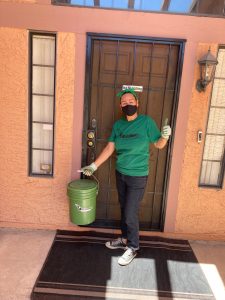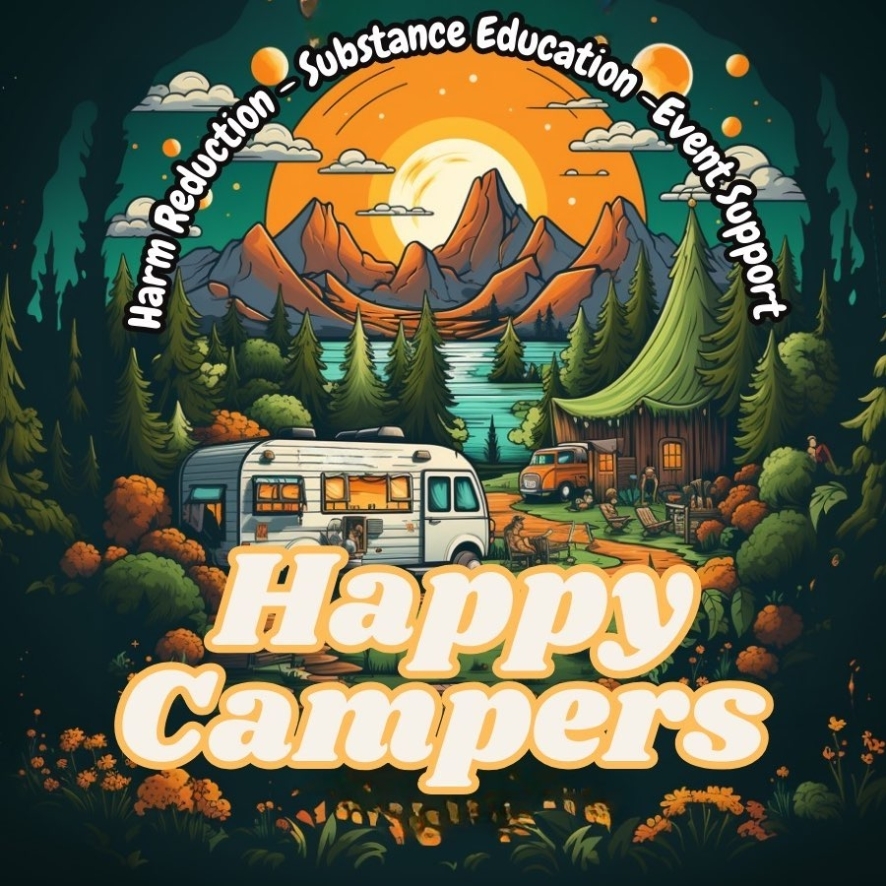
Happy Camper Overdose Response Team – Raising Awareness About Overdoses
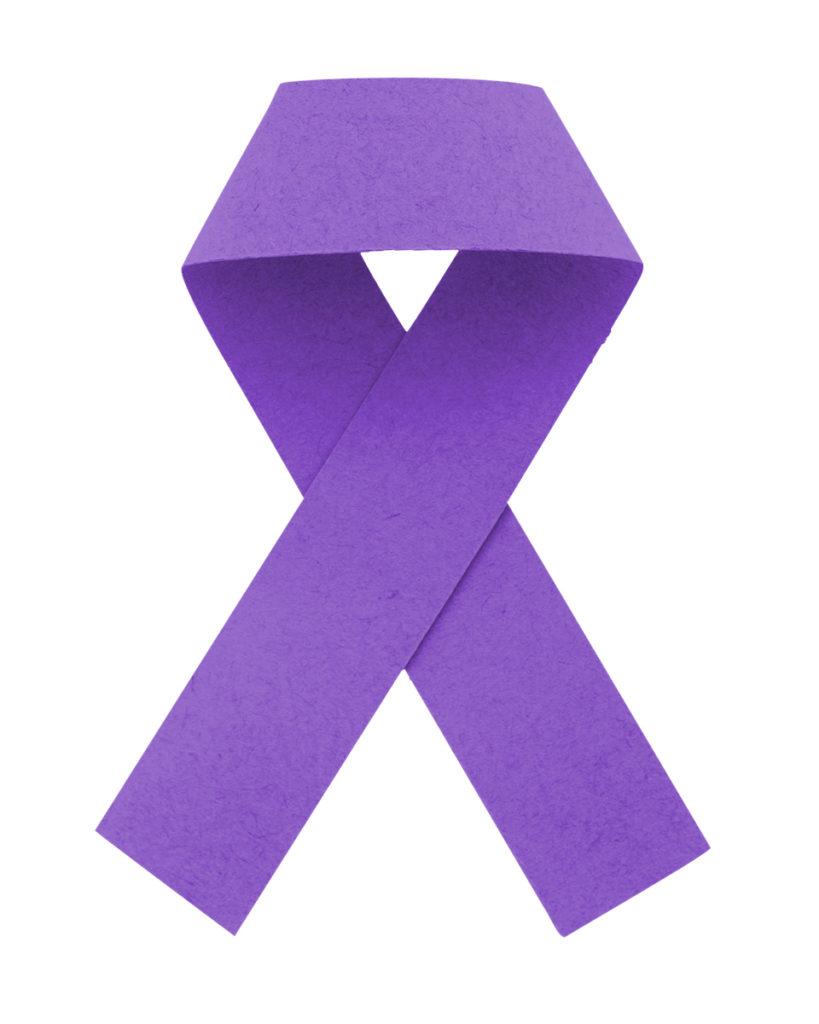
With the growing epidemic of fentanyl overdose in our country, grassroots community groups work to reduce the number of overdoses and the stigma surrounding recreational drug use. Launching earlier this year, Happy Camper Overdose Response is addressing these issues in Las Vegas.
Amber Giroux, founder of Happy Camper Overdose Response and contributor to the magazine, spoke more about what their group does and aims to accomplish in their work.
“Our mission is to provide education, outreach, and resources to the underground party community, to prevent overdose, and respond to people overdosing at events they are attending,” they explained. “We work to educate people about opioids and the fentanyl epidemic. We also provide test strips, overdose kits with Narcan, CPR barriers, and gloves to our team and those who attend smaller local and regional events.”
Before 2021, carrying test strips for fentanyl or Narcan was illegal as these items were considered paraphernalia. Thanks to Assembly Bill 345, passed by the Nevada legislature in 2021, it’s not only legal to possess these items, but the state provides training on how to use them.
“As a community partner of SNHD, we are trained to respond to overdose situations at events like house parties, underground raves, and other events with little to no security or medical teams on-site,” she said. “For example, we wouldn’t provide response at an event like EDC or Insomniac events. They already have on-site medical teams and overdose response.”
As a small team, Happy Camper Overdose Response is ultimately working to help people be safe at the events they already attend.
“We’re only eight people, so we can’t be everywhere,” they explained. “We want to teach and empower partygoers to look out for one another. This is how raving started.”
Inspiration Behind the Happy Camper Overdose Response
For Giroux, the reasons why she started Happy Camper Overdose Response hit close to home.
“My father was addicted to drugs, so from a young age, I watched his addiction to crank and other forms of meth deteriorate him completely until he killed himself. He’s one reason I’m aware of substance use disorder being a mental health issue instead of a criminal issue,” they explained. “He came from a poor Catholic family, so he was introduced to drugs at a young age and dropped out of school in the 6th grade. When doing well mentally, he worked construction jobs. When he wasn’t doing well mentally, he would be on different things and was often homeless.”
In addition to losing her father to drug use, Giroux has also lost friends to the fentanyl epidemic over the past several years.
“Before fentanyl became an epidemic, my friend in Texas died of an overdose in 2016 because he was sold heroin with fentanyl in it,” she said. “In 2020, when fentanyl became an epidemic in Clark County, we lost another friend to an overdose.”
After personally experiencing so much loss and hearing stories every month from people who’ve used Narcan to save someone’s life or hearing about people overdosing every month, Giroux decided to act.
“It hits really close to home, knowing that personal pain and seeing the statistics and how it’s been amplified,” they said. As a result of her personal experiences and understanding of the issue, this all led to the creation of her overdose response group.
What Overdose Response Looks Like
Giroux explained what overdose response looks like and her acronym for overdose response.
The CACA Protocol
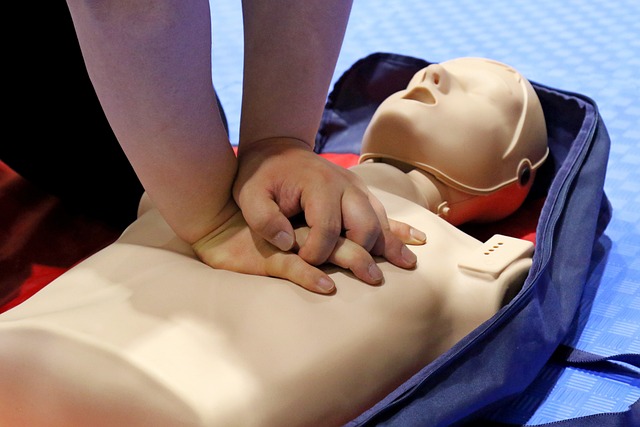
“We instruct people to use the CACA method,” she said, chuckling at the name. “I know it sounds funny, but it’s related to how if you find someone unresponsive, you might go, “Ahh shit!” The first C stands for ‘Check them.’ The next step is A – Administer Narcan if they’re not responsive. The next C stands for ‘Call 911’ to report an “’unconscious person.’ And the last A means ‘Administer additional doses of Narcan.’ You will want to do this every two to three minutes until paramedics arrive or until the person wakes up. If they are not breathing, perform CPR if you are able. Otherwise, keep them in the recovery position.”
Elaborating on the process more, they explained that while checking someone to see if they’ve overdosed, one of the best ways is by pinching or twisting their trapezius muscles along their neck. If they’ve overdosed, they won’t respond.
She also added that the CPR barriers make it safer to do CPR on someone.
How To Properly Call 911 in an Overdose Situation
On the matter of calling 911, Giroux expressed the importance of how to report the situation appropriately.
“Don’t report an overdose; report an unconscious person. That way, they send out paramedics, not police,” they said. “It’s important to not self-incriminate. Moreover, you don’t know if the person has fallen and hit their head, so ultimately, it is a medical issue that requires an ambulance.”
The Recovery Position
After performing the CACA steps on someone, Giroux explained how to correctly put someone in a recovery position while you wait for paramedics to arrive.
“If they are breathing, you want to turn them on their right side and gently raise their right arm to lift their head off the ground and support their neck. Then, take their left leg and cross it over their right to stabilize the position. This prevents them from choking if they vomit,” she explained. “Have a blanket nearby because they will be cold when they regain consciousness.”
Next Steps
Next, Giroux said that one of the most important things when a person comes to is to be very serious and stern with them. If possible, having a friend or someone with the person to help talk to them and explain the situation is a good idea since they know them.
“You have to tell them, ‘You’re overdosing right now. I just gave you Narcan, and we need to get you to a hospital,’” she said. “If they refuse, inform them that they almost died, the Narcan will wear off in about 30-90 minutes, and the hospital will help them recover safely. If they refuse and leave, you must keep an eye on them in case they overdose again because the opioids will often last longer in the body than the Narcan. It only blocks the receptors temporarily, so if they don’t get to a hospital, the fentanyl in their system can still kill them.”
Starting Happy Camper Overdose Response and Working Out the Kinks
After starting Happy Camper Overdose Response in May of this year, the group attended its first official event in July at Desert Boom. At that event, they just talked to people while handing out information and instructions about testing and overdose response.
“At first, we just had the test strips, and I realized we couldn’t show up to events without Narcan, so I reached out to the organization ‘End Overdose,’ and they sent us ten boxes so we could provide that to our team for their own response, but not enough to hand out at an event,” Giroux said.
“The team members have been going to different raves and parties and bringing it with them,” she said. “Collectively, they’ve attended an estimated 15 events, and luckily, no one has had to administer Narcan.”
Through attending events independently, group members have gained valuable insight into how different venues, like local nightclubs, respond to the idea of overdose response. This has helped Giroux and her team better assess how to tackle the challenges they’re up against.
“We learned that some clubs allow people to carry Narcan in their venue, and from what we’ve seen, most security teams don’t even know what it’s for and don’t understand that it can provide harm reduction,” they said. “We’re trying to take it to smaller local places like bars or venues and form relationships with the people who put on these smaller events, so they understand what we’re doing.”
What It’s Like Being Part of Happy Camper Overdose Response
As Happy Camper Overdose Response grows, so do the group’s needs. Giroux explained how the team is set up and what she’s looking for in terms of people who want to get involved on their own or be a part of the team.
The Team Set-up
“We are an evolving team, but we largely work independently. For starters, there’s a difference between team members we coordinate with and the people who are trained and given OD kits to carry themselves,” they explained. “We have a team of eight certified on the fentanyl test strip side of things and have a certificate for that. Someone from the health department trained me on the actual overdose response aspect, and I’ve been training my team one-on-one.”
Who Giroux is Looking to Collaborate With

Giroux said that she generally needs people who can table information at events and people who are interested in providing raver first aid at events they’re already attending.
“People can be team members in more direct communication with the group, or they can be ravers who care about people at these events who want to have test strips or Narcan to provide people,” they explained. “These might be people who might not want to be training other people but are ready and willing to help others at the events they already attend.”
Giroux added that to make an impact, the overall goal is to build capacity and have people be honest and communicate their comfort level with their involvement.
“Some people might not want to provide overdose response but want to table information, or vice versa,” they said. “There are no attendance requirements, and you’re not required to come to events we table at. But if you have an event you organized to table at, you could have other team members help you table.”
Main Responsibility
Those who work directly with the team and receive Narcan or OD kits to carry are responsible for reporting when they have to use the Narcan they’re provided.
“When Narcan is used, we make an anonymous report to SNHD about the outcome, whether the person overdosing was okay or not,” Giroux explained. “They want to ensure it’s being used and hopefully saving lives. Naloxone (brand name Narcan) has a long shelf life if stored properly, and the health department will swap nearly expired ones out if they have it in stock.”
Getting Trained on Using Test Strips and Narcan
Those wanting to get involved on their own or to join the coordinated team must first go through a brief training session on how to use fentanyl test strips. Giroux provides additional training on actual overdose response individually for people on her team.
“The test strip training is a pre-recorded video you do on your own time, followed by a short quiz. The whole thing takes about 30 to 45 minutes tops, and the test is about ten questions,” they explained. “Overdose response training is done with me. I have to give them the OD kit, which takes about 20 minutes to review everything.”
To grow and increase the response ability of her team, Giroux explained that she’s also looking to find a good CPR training program and possibly first aid training as well.
(Article continues after the ad)
Please follow our fantastic site sponsors! They make content like this possible! 🙂
Misconceptions About Overdose Response and Fentanyl Overdose and Other Challenges Happy Camper Overdose Response Faces
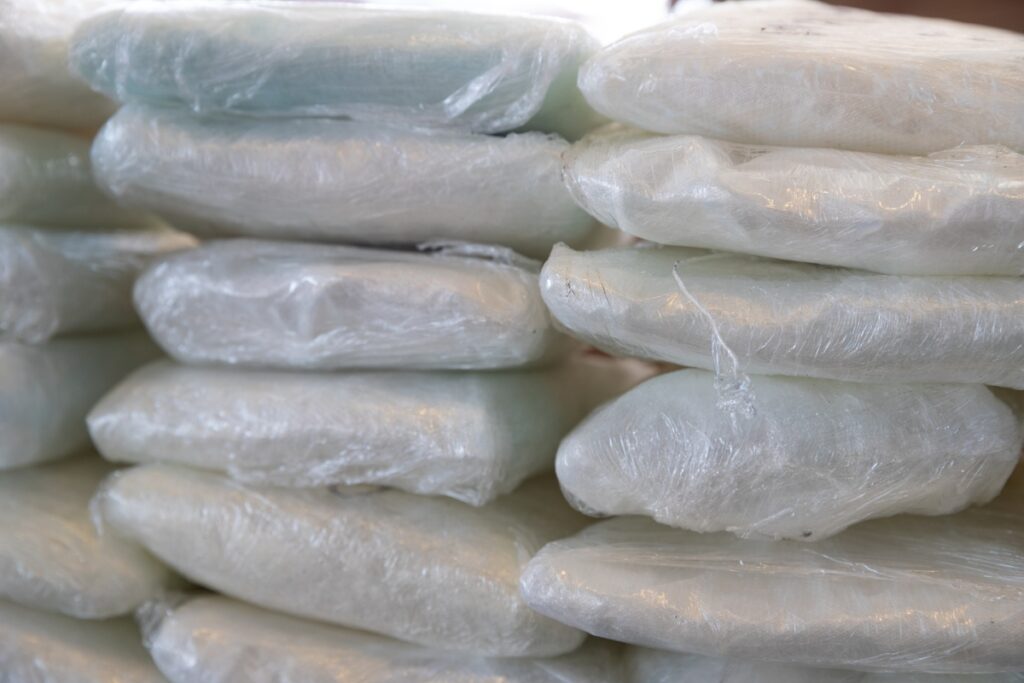
With the growing epidemic of fentanyl overdose, there are a lot of misconceptions Giroux and Happy Camper Overdose Response are up against in their work.
“We’re really trying to rebuild a community that’s been affected by the pandemic especially,” she said. “On top of that, there’s been the epidemic of fentanyl and the fear around talking about it. We’re up against a lot of misinformation and disinformation.”
The Topic of Harm Reduction
One of the biggest misconceptions about overdose response is that harm reduction encourages drug use.
“Many people assume we’re teaching drug users to use drugs better or that we encourage drug use. People don’t understand that drug users will use drugs regardless,” she said. “Harm reduction just means that fewer people overdose, end up in the hospital, or die due to overdose. And for the conservatives, I’d argue that harm reduction saves money by reducing the strain on our healthcare system.”
Other methods of harm reduction are also largely criticized. For example, places called ‘Safe Injection Sites’ are assumed to be legal drug use facilities. In reality, it’s not a site to use; it just means that it’s a place that either has an on-site medical response or it may be a place that provides resources like Narcan, test strips, or even clean syringes. Services like the National Overdose Prevention Lifeline (found at NeverUseAlone.com or 800-484-3731) will stay on the line with you and call for help only if you become unresponsive.
“We have safe-use sites here in Las Vegas already,” Giroux said. “For example, The LGBTQIA+ Center of Southern Nevada and SNHD have vending machines to discreetly deposit used syringes in a safe container. People can swap their used ones out for a safe, new one. This is through a community partnership with Trac-B Exchange”.
People are going to use these drugs with or without resources like this. Providing these things doesn’t encourage drug use; it reduces the impacts on our healthcare system by reducing the amount of transmitted diseases, overdoses, and other issues.
For more information about harm reduction, visit Harm Reduction Center LV.
Reducing Accidental Overdose
Another issue people often don’t realize is that most people who overdose on fentanyl don’t even know they’re consuming it in the first place.
“Fentanyl is dissolvable, meaning it can be cut with almost any substance. Meaning anyone consuming almost any recreational drug is at risk of it being laced and experiencing an accidental overdose,” Giroux explained. “That’s why one of the first steps to harm reduction is using test strips. This way, people can make sure they’re not about to take fentanyl unwittingly. By providing people with test strips and instructions, we reduce the instances of overdose.”
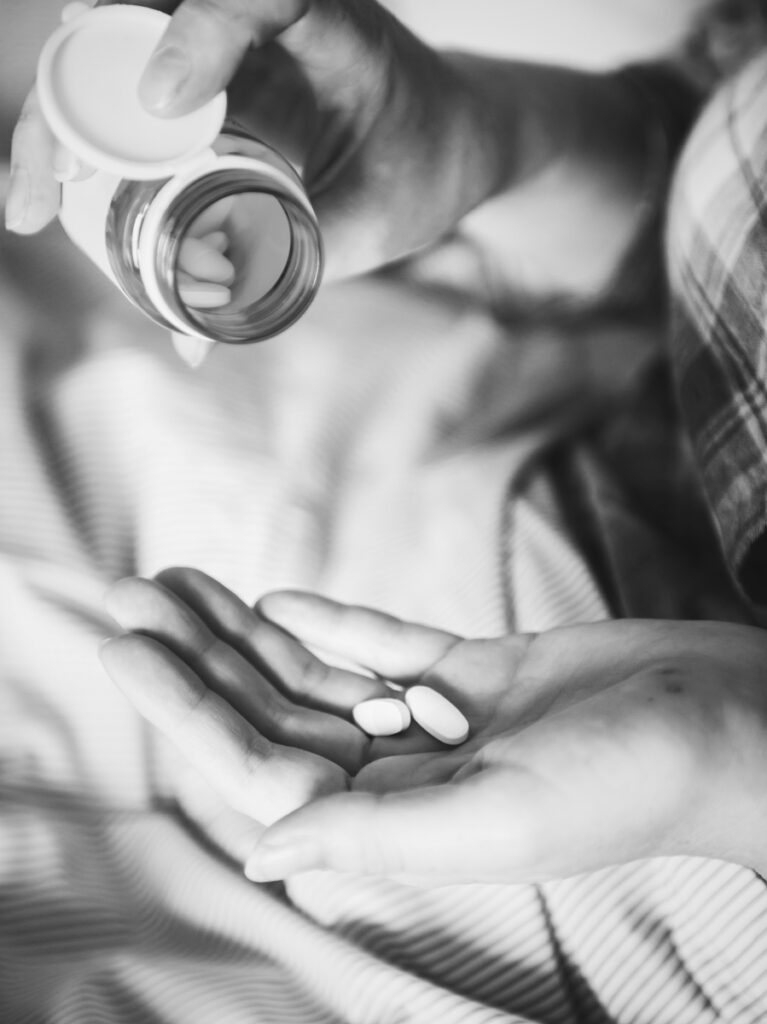
Misconceptions About Who Uses
Another misconception surrounding the fentanyl epidemic is the idea that people who use fentanyl or overdose on it are people who are unhoused, unemployed, or on welfare. Coupled with this assumption, people also assume that fentanyl users already use hard drugs.
“Many people get started on opioids from a surgery or injury or have chronic pain, and they originally obtained a legal prescription. If the doctor decides to revoke the prescription when the person is still experiencing pain, they may seek out fentanyl or other opioids illegally,” Giroux explained. “Until 2020, this was largely a white male problem, as they were the main group of people most likely to be prescribed opioids. Due to medical racism and sexism, women – especially Black women – are often automatically assumed to seek drugs when reporting pain, so they’re less likely to obtain them in the first place.”
However, once the epidemic of fentanyl being laced with other street drugs grew, the demographics of overdose victims expanded.
Misconceptions About Fentanyl Itself
According to health departments and medical professionals nationwide, the portrayal of fentanyl in the media is incorrect.
From TV shows and news reports of police supposedly overdosing on fentanyl from exposure, the public has been led to believe that just being near fentanyl means you might overdose.
“From the person who trained me at SNHD, they explained that you have actually to ingest it to be affected or overdose. Unless you have an open cut on your skin exposed to it, or you are breathing it in directly, touching fentanyl or being near it will not cause a reaction or an overdose,” Giroux said.
Because of the misinformation and disinformation reported by the news, police, and TV shows, the reality of things is exaggerated. Fentanyl is routinely used in minor but painful surgical procedures in minuscule doses. Someone getting a procedure done might turn down its use out of fear of overdose, even in a medical setting.
While fentanyl is dangerous outside of professional medical settings, the misconceptions about the dangers can have unintended effects. Someone rejecting fentanyl or other opioids for a procedure out of fear of overdose may experience prolonged pain after the procedure. Which in turn may cause them to seek pain relief in more dangerous ways or cause them to experience unnecessary pain.
Misconceptions About Drug Use in General
One major thing Giroux wishes people would better understand about the overall issue of substance abuse disorder is what causes it in the first place. People don’t just wake up one day and decide to use drugs.
“Substance use disorder is a mental health issue, not a criminal one,” she said. “It can stem from trauma, poverty, and other forms of abuse. One terrible thing can happen to a person, which may push them over the edge to seek relief and find it in all sorts of substances.”
Overall, compassion and understanding about the issue can lead to more proactive ways to address it. Simply criminalizing drug use does nothing to address the underlying systemic issues and other factors that lead to drug use in the first place.
Assumptions About Carrying OD Kits or Test Strips
In addressing other challenges the group faces, Giroux also explained that people assume that just having overdose response materials means you’re a drug user.
“It’s really been working against us, and we’ve had a hard time convincing some ravers to carry the kits in the first place,” she said. “We have to reduce the stigma of harm reduction and overdose response in general. People often assume that someone simply wearing rave attire means they’re under the influence.”
She explained that it’s a deeply personal issue for most people who carry Narcan and that people need to learn to be more sensitive to that.
“Just because someone’s prepared to respond to an overdose doesn’t mean they’re partaking in a substance. It could be because they’ve lost people like I have or because they’re recovered addicts,” they elaborated. “Especially those who recovered before fentanyl came on the scene, they come from a place of compassion and concern for the younger generations dealing with this epidemic.”
She went on to say that she’s heard people say that if they had still been using drugs today, they’d likely be dead because of how bad things are now and how prevalent fentanyl is.
“They want to look out for the people younger or newer to the scene and at higher risk.”
Misconceptions About The Efficacy of Test Strips
Another misconception and challenge that Giroux says the group has faced is the assumption that the test strips don’t work as claimed.
“We’ve gotten pushback from people who say that the fentanyl test strips don’t work because you have to use a lot to test. They think they have to use half their supply to test when you only need something the size of a grain of rice,” she said. “Ultimately, it comes down to arguments about the efficacy of testing drugs and resulting resistance in the community based on misinformation.”
The Challenge of Doing The Work in the First Place
Some significant challenges Giroux faces with expanding her team include finding people who communicate about their capacity to do the work they’re signing up for, combating the associated stigma in general, and obtaining resources.
“I need people to be honest about their capacity to do this when they sign up for training,” they said. “I’ve had people sign up, and then I never hear from them again. I don’t have expectations or requirements of people outside of what they’re willing to do comfortably, but I need communication about that.”
Moreover, because law enforcement agencies are more likely to do the training than other people, there aren’t many community partners trying to do this work.
“Overall, it feeds into the trend of over-policing that we see,” Giroux said. “If more people and organizations were trained with response and harm reduction, we could lessen that stigma and the need to police the issue.”
“It’s hard enough just obtaining enough Narcan because not enough funding is being put into this by the state,” she said. “If more people conduct the training and get involved at the community level, this will tell the state we need to fund this more.”
How Testing and Overdose Response Helps The Community At Large
The Value of Testing Drugs at Events
Retouching on harm reduction, Giroux further explained how encouraging people to test drugs at events helps the community overall.
“As mentioned before, because Fentanyl is in everything now, some people may not realize their drugs have fentanyl in them, so this provides a barrier to that,” she said. “Even if you know the person you’re getting from or have gotten from them before, you could be at risk of getting fentanyl.”
She went on to clarify that Happy Camper Overdose Response does not do the testing themselves at events – they’re handing out test strips to people to test their own substances.
Moreover, she explained that harm reduction is more than just testing substances; it’s having conversations with people.
“Part of the outreach and education side of things includes talking to people about going slow with their use, using a little at a time, and being safe and smart about their use,” they said. “We might say, ‘New batch? Let’s test it. Haven’t tried before? Go slow.’ People will do drugs regardless, so it’s better to teach people how to be safe about it.”
All in all, testing drugs at events is about saving lives. Yet harm reduction methods such as testing still get a bad rap. That’s why groups like the National Harm Reduction Coalition work to reduce the stigma around it.
According to the NHRC, “Harm reduction is a set of practical strategies and ideas aimed at reducing negative consequences associated with drug use. Harm reduction is also a movement for social justice built on a belief in and respect for the rights of people who use drugs.”
With over 150 overdose deaths per day from synthetic opioids like fentanyl, as reported by the CDC, it’s imperative to reduce the harm associated with the epidemic in the first place.
The Value of Overdose Response
When asked how overdose response can help the community at large, Giroux explained that it makes the community safer. She also explained that it often gives people a second chance.
“People are not trying to overdose, and often, after their experience with overdosing, they get a wake-up call and choose to get clean. Not always, but sometimes,” they said.
Retouching on accidental overdose, she elaborated how this experience can cause people who don’t use opioids to quit recreational drug use altogether.
“Maybe someone just wanted to try something for one night and got something laced with fentanyl. Surviving that overdose gives them a second chance to make better decisions, especially for young people or people who don’t rave and attend an event for the first time,” they said. “If you let people die, they don’t get that chance to do better or live a full and fulfilling life. And, by saving someone from an overdose, you’re preventing their family from experiencing the grief of losing a loved one who would have otherwise died.”
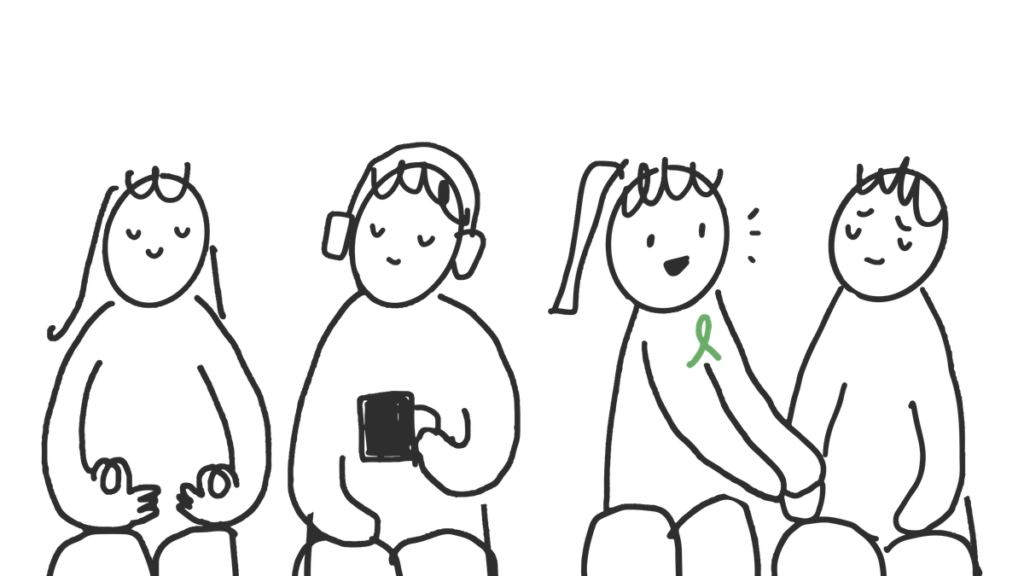
Besides reducing overdose deaths and resulting strain on medical systems in the community, harm reduction and overdose response ultimately help lessen the dehumanization associated with drug use and overdose.
“It helps substance users be humanized in a time where people want to dehumanize as much as possible. I think it’s vital that everyone feels their life is worth saving,” Giroux said. “If people feel a little more cared for, maybe they won’t use drugs as heavily, or they’d talk to people more and discuss the issues they’re dealing with to get the help they need.”
Moreover, reducing the stigma of use can ultimately help reduce the stigma of providing a response in the first place.
Looking Towards The Future and Growing Happy Camper Overdose Response
As Giroux looks to build on her work, she focuses on making Happy Campers Overdose Response self-sufficient.
“Our goals are to grow the team over time so people can operate on their own and overall reduce the number of people overdosing in the first place,” they said. “That means getting people trained and getting OD kits and test strips in their hands. From there, we aim to grow the prevention and response side of things. If people aren’t ready to do the response side, they can at least be trained in the prevention side.”
Moreover, Giroux said they’re focusing their energy on preparing people attending festivals and other events by tabling information and resources.
“We have one upcoming opportunity for a September desert gathering. We’ll be tabling for the first time and handing out Narcan and test strips,” they said. “This event will give us a good chance to reach more people from various groups of party-goers because of the different groups throwing it. Any remaining Narcan doses leftover from the event will go to the Southern Nevada Regional Gathering event in October.” All of this comes with instructions and in-person training.
Giroux’s Personal Experience in This Line of Community Work
From her experience in starting Happy Camper Overdose Response, Giroux shared what she learned.
“I discovered that it is not as easy as I thought it would be. Knowing how many people have been affected by this epidemic and seeing that some people will brush you off and try to change the conversation is tough,” they said. “And some people will say they’re interested but not respond to your texts about it, so I’ve learned to not always have the highest expectations. And, I’ve learned how to talk about it with people and who to talk about it with.”
Additional Information
More About Narcan and Other Drugs
Giroux shared some important information for people, including more about Narcan and other drugs showing up in the community.
“Narcan is the most well-known brand name of the actual medication used, called Naloxone,” she said. “But there are other brand names like Kloxxado and more.”
Next, she forewarned of a new drug entering the party scene.
“Xylazine, also known as Benzo-dope or Tranq, is a non-opioid sedative coming into use. Naloxone will NOT work on it, and it’s as deadly as fentanyl or deadlier in some cases. And it’s here in Vegas already,” they said. “We also have to be on guard about Carfentanil, though, at this time, there isn’t too much of it here yet. However, according to the CDC, fentanyl is 50 times stronger than heroin and 100 times stronger than morphine. Carfentanil is 100 times stronger than heroin and 10,000 times stronger than morphine. So we have to be aware of it.”
She added that while some people are using these new, novelty drugs on purpose, like fentanyl, they can be laced with other drugs, and people might not know they’re consuming it. With fentanyl test strips only working for fentanyl, people may also need to consider acquiring test strips for Xylazine. Naloxone will not reverse the effects of Xylazine.
Obtaining Test Strips or Narcan
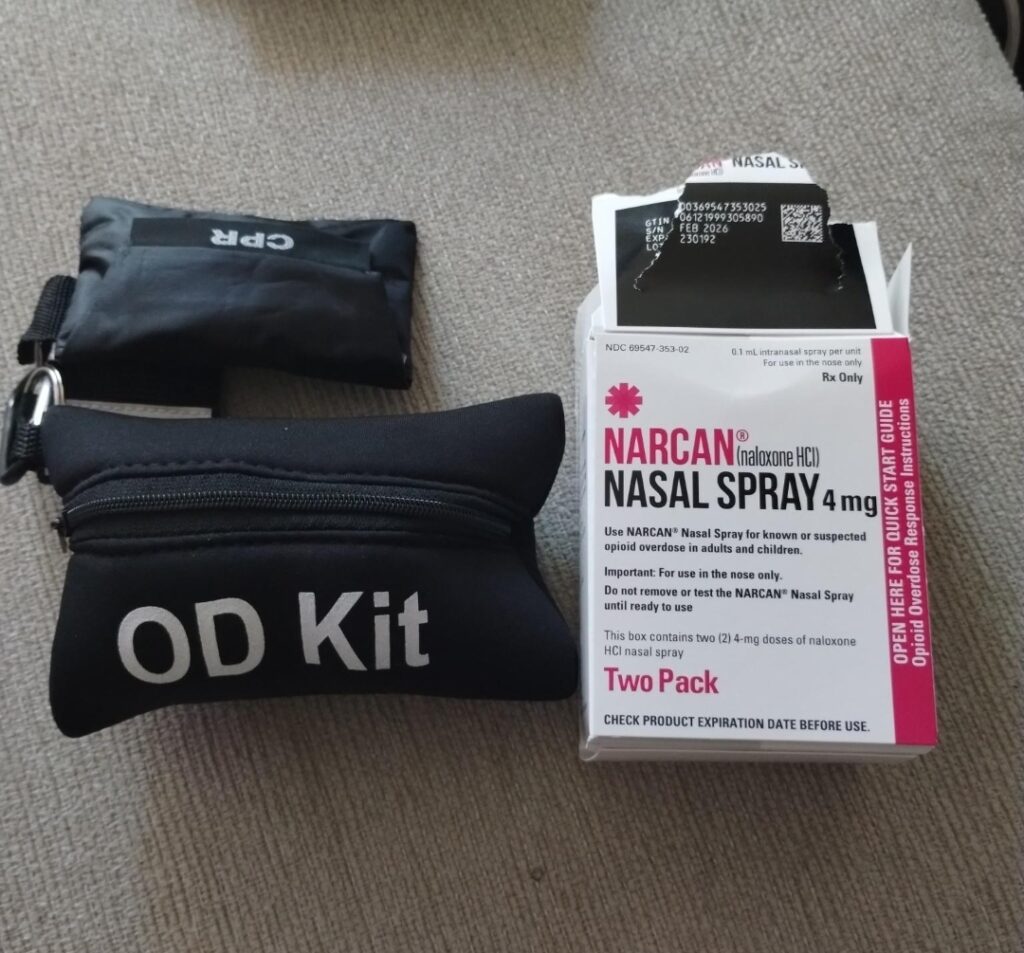
Regarding people obtaining Narcan and test strips for fentanyl on their own or online, Giroux explained that it is difficult right now due to the fentanyl epidemic increasing the demand for these products.
“That said, you should be able to purchase naloxone at one of the Trac-b vending machines or any pharmacy over the counter,” she said. “There might be a charge for it, but it shouldn’t be too expensive.”
Legislation
Lastly, Giroux shared a bit about a recent bill that the Nevada legislature passed this year.
“Senate Bill 35 (2023) makes life in prison possible for possession of an ounce of anything laced with fentanyl,” they said. This bill does not correctly target distributors and will not work to reduce the epidemic since an ounce could easily be for someone’s personal use.
And regarding the law, Giroux also added that people shouldn’t be discouraged about getting training for overdose response due to liability concerns.
“These harm reduction tools are covered under Nevada’s Good Samaritan laws,” she said. “That means anyone helping in good faith is free from consequences.”
#GetinMotion With Happy Camper Overdose Response
Follow the team’s Instagram to stay updated on Happy Camper Overdose Response news. People who want to get involved with the team can contact Giroux at contactus@happycamperslv.org. Otherwise, they can email Od@snhd.org to learn more about how to take action on their own as a separate community partner.
Giroux also said that the community can help support her work by learning more about harm reduction in general. People can also start productive conversations by talking to friends and family about the epidemic and by working to break down the stigmas about drug use and overdose.
Today being International End Overdose Awareness Day is a perfect time to learn more and get involved.
Thank you to our supporters and sponsors!
As always, we want to thank our Patreon’ Cultivator’ supporters and sponsors who help make content like this possible!
The following Patron(s) supported the production of this article:
Crystal Gropp
The following sponsors supported the production of this article:
Viva La Compost & LunaKai Lash



